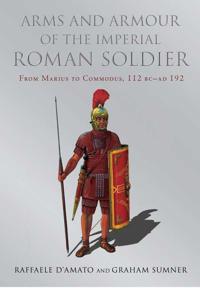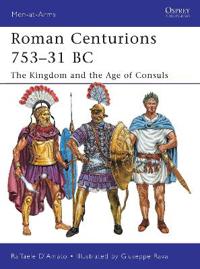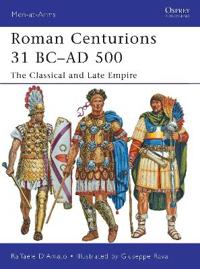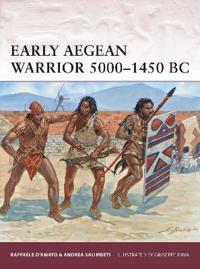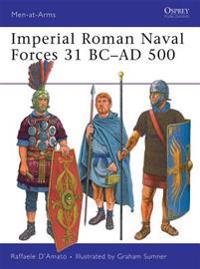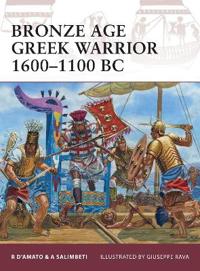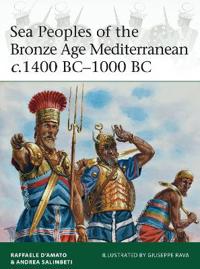Arms and Armour of the Imperial Roman Soldier (Inbunden)
avRaffaele D'amato, Graham Sumner, Raffaele D'amato
ISBN: 9781848325128 - UTGIVEN: 200909From the Latin warriors on the Palatine Hill in the age of Romulus, to the last defenders of Constantinople in 1453 AD, the weaponry of the Roman Army was constantly evolving. Through glory and defeat, the Roman warrior adapted to the changing face of warfare. Due to the immense size of the Roman Em[...]
The Varangian Guard 988-1453 (Pocket)
avRaffaele D'amato, Giuseppe Rava, Raffaele D'amato
ISBN: 9781849081795 - UTGIVEN: 201006The Varangian Guards were Viking mercenaries who operated far beyond their native shores as an elite force within the Byzantine Armies. Descendants from a legendary line of warriors, the Varangian Guard was formed after a group of Viking mercenaries made a major contribution to the Byzantine Emperor[...]
Roman Centurions 753-31 BC (Pocket)
avRaffaele D'amato, Giuseppe Rava, Raffaele D'amato
ISBN: 9781849085410 - UTGIVEN: 201108"Roman Centurions 753-31 BC: The Kingdom and the Age of Consuls".
Roman Centurions 31 BC-AD 500 (Pocket)
avRaffaele D'amato, Giuseppe Rava, Raffaele D'amato
ISBN: 9781849087957 - UTGIVEN: 201202"Roman Centurions 31 BC-AD 500: The Classical and Late Empire".
Early Aegean Warrior 5000-1450 BC (Häftad)
avRaffaele D'Amato, Andrea Salimbeti
ISBN: 9781780968582 - UTGIVEN: 201306The mainland and islands of Greece were extensively settled by peoples moving from Asia Minor in c.5000 BC, while a further wave in c.5000 BC introduced bronze-working to the region. It is form this point on that it is possible to discern a distinct Cycladic or Aegean civilisation, developing at rou[...]
Imperial Roman Naval Forces 31 BC-AD 500 (Häftad)
avRaffaele D'Amato
ISBN: 9781846033179 - UTGIVEN: 200911The Roman Navy, although somewhat overshadowed by the legions, played an important role for the Roman Empire. For the Army to conquer and rule its vast territories, control of the sea lanes was essential. The navy fleets needed to be structured and powerful in order to dominate the trade routes, tra[...]
Bronze Age Greek Warrior 1600-1100 BC (Pocket)
avRaffaele D'amato, Andrea Salimbeti, Giuseppe Rava
ISBN: 9781849081955 - UTGIVEN: 201103More than a century has passed past since German archeologist Heinrich Schliemann discovered the treasures of Bronze Age Mycenae. The richly decorated artefacts of the entombed warriors, whose bodies still lay in their graves, confirmed that Homer's epic "The Iliad" was based upon true events, and t[...]
Sea Peoples of the Bronze Age Mediterranean c.1400 Bc-1000 Bc (Pocket)
avRaffaele D'amato, Andrea Salimbeti, Raffaele D'amato
ISBN: 9781472806819 - UTGIVEN: 2015-02This title features the latest historical and archaeological research into the mysterious and powerful confederations of raiders who troubled the Eastern Mediterranean in the last half of the Bronze Age. Research into the origins of the so-called Shardana, Shekelesh, Danuna, Lukka, Peleset and other[...]
Byzantine Imperial Guardsmen 925-1025 (Pocket)
avRaffaele, Dr. D'amato, , Elite
ISBN: 9781849088503 - UTGIVEN: 201208The hundred-year period ending in 1025, from the reign of the Emperor Constantine VII to that of Basil II 'the Bulgar-Slayer', encompassed the last great era of Byzantine aggression and dominance in the Near East and Balkans. During that time, a succession of soldier-emperors hallenged and defeated [...]

